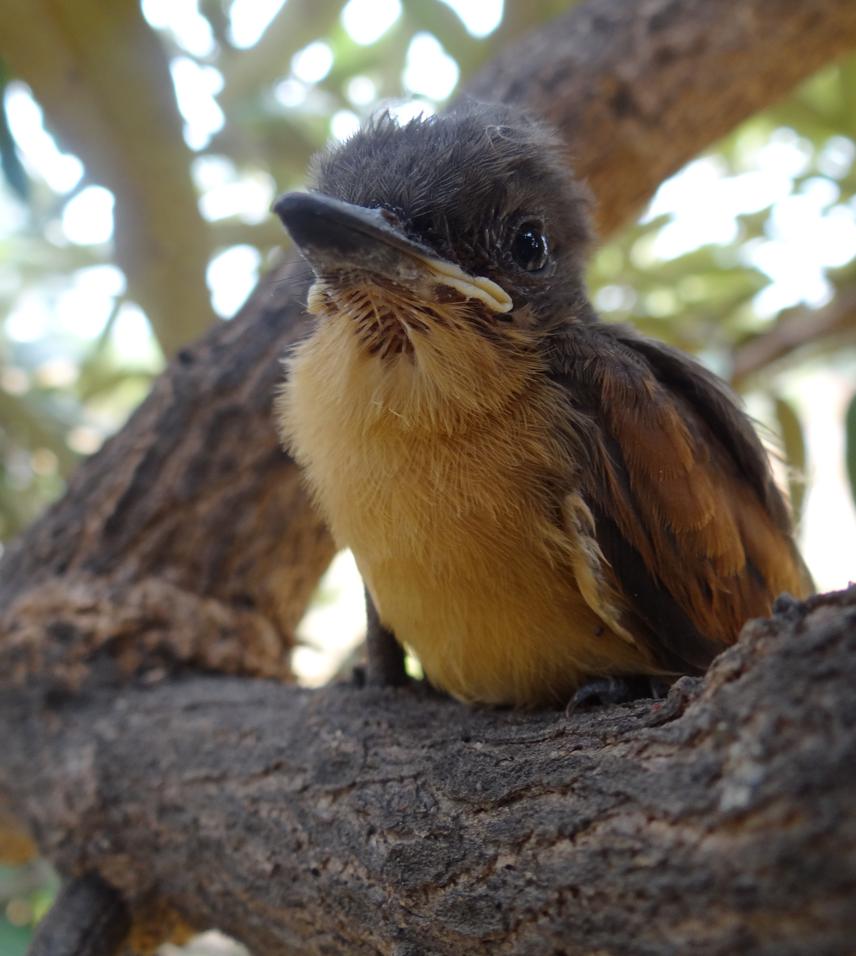Sergio Nolazco
Other projects
The aim of the project is to provide baseline empirical evidence and understanding of human land alteration effects on biodiversity for integrative conservation strategies.

Rufous flycatcher on his first day out of the nest.
Equatorial dry forests integrate into a unique biome exhibiting a high diversity of endemic species restricted to southwest Ecuador and northwest Peru. Unfortunately, the growing rate of landscape alteration due to human activities are reducing and fragmenting this valuable ecosystem. Uncontrolled wood exploitation and unsustainable agricultural/farming expansion are the main causes of deforestation. Lowland dry forests are becoming the most vulnerable systems due to closeness to large, growing cities and accessibility by roads.
This project considers bird assemblages as biological indicators of ecosystem degradation since they are highly sensitive and functional diverse. After our first RSG support we elucidated the patterns of land alteration on biodiversity and identified the most sensitive bird species: Peruvian plantcutter Phytotoma raimondii, Rufous flycatcher Myiarchus semirufus and Tumbes tyrant Tumbezia salvini. On this 2nd RSG we are making specific scientific research on these three ‘umbrella species to know their basic requirements and understand their different responses to land alteration. Knowledge gain on these endemic and threatened species is going to be essential for efficient restoration and management of lowland equatorial dry forest to preserve its unique biodiversity.